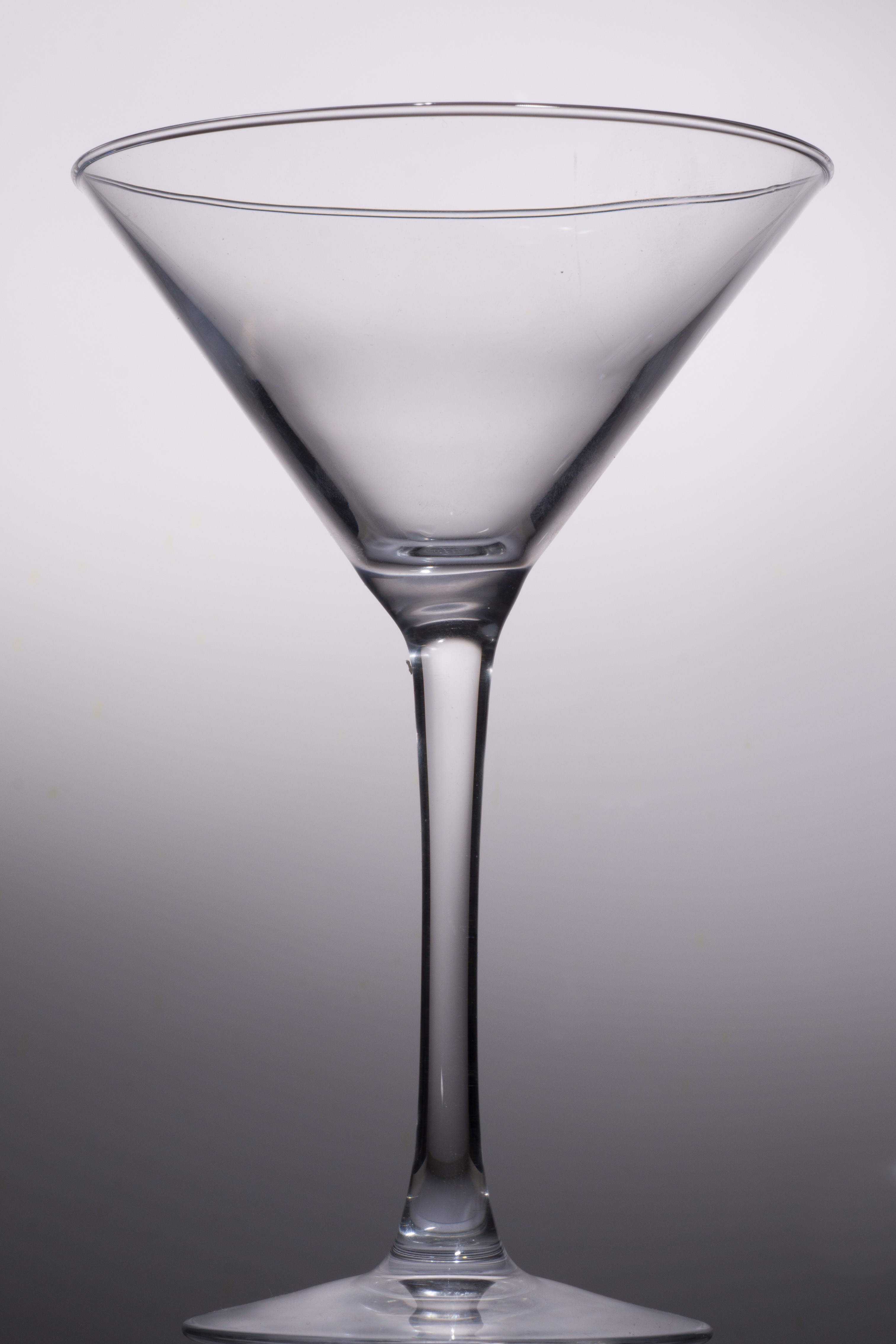What Is A Martini? It’s a timeless cocktail, a symbol of sophistication, and a drink with countless variations, and WHAT.EDU.VN is here to guide you through it all. From its basic ingredients to the nuances of ordering one at a bar, we’ll explore everything you need to know about this iconic beverage.
Craving to learn more about the history, preparation, and enjoyment of martinis? Ask your question about it on WHAT.EDU.VN for free and receive detailed answers, or simply explore our extensive resources, including cocktail recipes, bar guides, and mixology tips to enhance your drinking experience.
1. What Are The Key Ingredients In A Martini?
The fundamental ingredients of a martini are gin and vermouth. Gin provides the base spirit, infused with botanicals, most notably juniper, while vermouth, an aromatized wine, adds complexity and dryness. The classic ratio varies, but a typical martini uses more gin than vermouth. A garnish, such as an olive or a lemon twist, completes the drink.
To expand, the choice of gin and vermouth greatly impacts the final flavor profile. Different gins offer diverse botanical blends, from London Dry with pronounced juniper to more contemporary gins with citrus or floral notes. Vermouth also comes in various styles, including dry, sweet, and bianco, each contributing a unique character to the martini.
1.1. How Does Gin Choice Affect Martini Flavor?
The type of gin you select drastically changes the martini. London Dry gins offer a classic, juniper-forward taste. New Western or contemporary gins provide citrus and floral notes. Old Tom gins offer a slightly sweeter flavor. Each provides a nuanced flavor that changes the drink’s overall profile.
1.2. What Are The Different Types Of Vermouth Used In Martinis?
Dry vermouth is the classic choice, lending a crisp, herbaceous note. Sweet vermouth adds sweetness and complexity. Bianco vermouth, a sweeter style of white vermouth, provides a balanced profile. The proportions used affect the dryness of the final drink.
1.3. Can Vodka Be Used Instead Of Gin In A Martini?
Yes, a martini can be made with vodka instead of gin, creating what is often called a vodka martini, or sometimes a “kangaroo.” This variation offers a cleaner, more neutral flavor profile, allowing the vermouth and garnish to shine. The choice depends on personal preference.
2. What Are The Classic Martini Ratios?
The ratio of gin to vermouth in a martini is a matter of personal taste and style. A classic dry martini might use a ratio of 6:1 or even 8:1 gin to vermouth, resulting in a very dry drink. A more balanced martini might use a 2:1 or 3:1 ratio. Some prefer an equal parts martini, also known as a “50/50” martini.
To elaborate, the trend over the years has moved towards drier martinis, with less and less vermouth. Some martini enthusiasts even prefer a “rinse” of vermouth, where the vermouth is swirled in the glass and then discarded before adding the gin. Ultimately, experimentation is key to finding the perfect ratio that suits your palate.
2.1. What Is Considered A Very Dry Martini?
A very dry martini typically contains very little vermouth, often with a ratio of 6:1 or higher of gin to vermouth. Some recipes involve merely coating the glass with vermouth and then discarding it, maximizing the gin’s presence.
2.2. What Is A 50/50 Martini?
A 50/50 martini contains equal parts gin and vermouth. This style offers a balanced profile, showcasing both the gin’s botanicals and the vermouth’s herbaceous qualities. It is a good choice for those who appreciate a less boozy drink.
2.3. How Can I Adjust The Ratio To Suit My Taste?
Start with a classic ratio like 3:1 gin to vermouth and adjust from there. If you prefer a drier martini, gradually reduce the amount of vermouth. If you want a smoother, less intense drink, increase the vermouth. Small adjustments can make a big difference.
3. How Do You Prepare A Martini? Stirred Or Shaken?
The debate over whether to stir or shake a martini is a long-standing one. Traditionally, martinis are stirred to maintain the silky texture of the gin and avoid over-dilution. Shaking introduces tiny ice shards, which can cloud the drink and dilute it more quickly. However, some prefer the colder, crisper result of a shaken martini.
To clarify, the James Bond quote “shaken, not stirred” popularized the shaken martini, but many bartenders and cocktail aficionados argue that stirring is the superior method for a classic martini. Stirring chills the drink while preserving its texture and clarity.
3.1. Why Is Stirring Traditionally Preferred?
Stirring minimizes dilution and maintains the gin’s smooth texture. It allows the ingredients to meld gently, preserving the drink’s clarity and elegance. Stirring is the preferred method for those who appreciate a classic martini experience.
3.2. What Are The Arguments For Shaking A Martini?
Shaking chills the drink more rapidly and creates a slightly frothy texture. Some argue that it better integrates the flavors, though this comes at the cost of increased dilution. Shaking can be a good option for those who prefer a very cold, crisp martini.
3.3. What Is The Best Technique For Stirring A Martini?
Fill a mixing glass with ice. Add the gin and vermouth. Gently stir with a bar spoon for about 20-30 seconds, until well-chilled. Strain into a chilled martini glass. The goal is to chill the drink without excessive dilution.
4. What Are The Popular Martini Variations?
Beyond the classic dry martini, there are numerous variations that cater to different tastes. These include the Dirty Martini (with olive brine), the Perfect Martini (with equal parts dry and sweet vermouth), the Gibson (garnished with a pickled onion), and the Vesper (a mix of gin, vodka, and Lillet).
To illustrate, the possibilities are endless. The Espresso Martini, Appletini, and Chocolate Martini are examples of more modern variations that incorporate different flavors and ingredients. These variations often appeal to those who prefer sweeter or more fruit-forward cocktails.
4.1. What Is A Dirty Martini?
A dirty martini includes a splash of olive brine, giving it a salty, savory flavor. The amount of brine can be adjusted to suit individual preferences, from slightly dirty to extra dirty. It is typically garnished with olives.
4.2. What Is A Perfect Martini?
A perfect martini uses equal parts dry and sweet vermouth, in addition to gin. This creates a balanced profile that is neither too dry nor too sweet. It is a good option for those who find a traditional dry martini too austere.
4.3. What Is A Gibson Martini?
A Gibson is a classic martini variation garnished with a pickled onion instead of an olive or lemon twist. The pickled onion adds a unique savory and tangy element to the drink. It is a favorite of those who enjoy bold flavors.
4.4. What Is A Vesper Martini?
The Vesper martini, made famous by James Bond, combines gin, vodka, and Lillet (or a similar aromatized wine). The specific recipe calls for three parts gin, one part vodka, and half a part Lillet. It is shaken, not stirred, and garnished with a lemon twist.
5. What Are The Best Martini Garnishes?
The garnish is an essential part of the martini experience, adding aroma and visual appeal. The classic garnishes are olives (green olives, often stuffed with pimento) and lemon twists. Other options include cocktail onions (for a Gibson), and even a small sprig of rosemary or thyme for a more herbaceous note.
To emphasize, the garnish should complement the flavors of the gin and vermouth. A lemon twist adds a bright, citrusy note, while olives contribute a savory, briny element. The choice of garnish can significantly alter the overall impression of the martini.
5.1. Why Are Olives A Classic Martini Garnish?
Olives add a salty, savory element that balances the dryness of the gin and vermouth. They provide a contrasting flavor that enhances the overall complexity of the drink. Green olives, particularly those stuffed with pimento, are the most common choice.
5.2. What Does A Lemon Twist Add To A Martini?
A lemon twist adds a bright, citrusy aroma and a subtle hint of acidity. The oils from the lemon peel are expressed over the drink, adding a refreshing top note. A lemon twist is a good choice for those who prefer a cleaner, more vibrant martini.
5.3. How Do You Prepare A Perfect Lemon Twist?
Use a sharp vegetable peeler to remove a strip of lemon peel. Twist the peel over the drink to release the oils, then rub the peel around the rim of the glass. You can then drop the twist into the drink or drape it over the rim.
5.4. What Are Some Alternative Martini Garnishes?
Beyond olives and lemon twists, other garnish options include pickled onions (for a Gibson), caperberries, and even a small sprig of herbs like rosemary or thyme. These garnishes add unique flavors and aromas that can complement different gin styles.
6. How Do You Order A Martini At A Bar?
Ordering a martini at a bar can seem daunting, but it’s quite simple once you know the basics. Start by specifying the type of spirit (gin or vodka), the desired dryness (extra dry, dry, medium, wet), and the garnish (olives, lemon twist, or Gibson). You can also mention a specific gin brand if you have a preference.
To simplify, a typical order might sound like this: “I’ll have a gin martini, dry, with a lemon twist.” Or, “A vodka martini, extra dirty, with olives.” Being clear and specific will help ensure you get the martini you desire.
6.1. What Does “Dry” Mean When Ordering A Martini?
“Dry” refers to the amount of vermouth in the martini. A dry martini has less vermouth, while a wet martini has more. An extra dry martini has very little or no vermouth.
6.2. What Does “Dirty” Mean When Ordering A Martini?
“Dirty” means that the martini includes olive brine. The more brine, the dirtier the martini. You can specify how dirty you want it by saying “slightly dirty,” “dirty,” or “extra dirty.”
6.3. What If I Don’t Know What Kind Of Martini I Like?
If you’re unsure, you can ask the bartender for a recommendation. You might say, “I’m new to martinis, what would you suggest?” The bartender can guide you based on your preferences for gin or vodka, and whether you prefer a drier or wetter drink.
7. What Is The Best Glassware For Serving A Martini?
The classic martini glass is a stemmed glass with a conical bowl. This shape is designed to showcase the drink’s clarity and aroma, while the stem keeps the drink cold by preventing heat transfer from the hand. However, coupe glasses are also sometimes used, though they are less traditional.
To clarify, the size of the martini glass is also important. A typical martini glass holds between 3 and 6 ounces. Overly large glasses can make the drink appear small and dilute the aroma.
7.1. Why Is A Stemmed Glass Preferred?
A stemmed glass helps to keep the martini cold by preventing the drinker’s hand from warming the drink. This is particularly important for a drink that is served without ice.
7.2. What Is A Coupe Glass?
A coupe glass is a stemmed glass with a shallow, broad bowl. While not as traditional as the conical martini glass, it is sometimes used for serving martinis. Coupe glasses have a more vintage feel and are often used for other cocktails as well.
7.3. Does The Shape Of The Glass Affect The Drinking Experience?
Yes, the shape of the glass can affect the drinking experience. The conical shape of the martini glass concentrates the aroma, while the broad bowl of a coupe glass allows the aroma to dissipate more quickly. The choice of glass depends on personal preference.
8. What Are Some Common Martini Mistakes To Avoid?
Making a great martini is simple, but there are a few common mistakes to avoid. These include using low-quality ingredients, over-diluting the drink, not chilling the glass, and adding lemon juice to a classic martini (lemon oil from the peel is preferred).
To emphasize, using fresh, high-quality ingredients is crucial for a great martini. Similarly, proper chilling and minimal dilution are essential for preserving the drink’s flavor and texture.
8.1. Why Is It Important To Use High-Quality Ingredients?
The quality of the gin and vermouth directly impacts the taste of the martini. Using subpar ingredients can result in a harsh or unpleasant drink. Investing in good-quality gin and vermouth is essential for a great martini experience.
8.2. How Can You Avoid Over-Diluting A Martini?
Use plenty of ice when stirring and stir for only as long as necessary to chill the drink. Avoid shaking, as this introduces more ice shards and results in greater dilution. Use chilled glasses to help maintain the drink’s temperature and minimize dilution.
8.3. Why Is It Important To Chill The Glass?
Chilling the glass helps to keep the martini cold for longer, preserving its flavor and texture. A warm glass can quickly heat up the drink, compromising the drinking experience.
9. What Is The History Of The Martini?
The exact origins of the martini are debated, but it is generally believed to have emerged in the late 19th century. One popular theory suggests it evolved from a drink called the Martinez, which was served in Martinez, California, during the Gold Rush. Another theory links it to a bartender at New York’s Knickerbocker Hotel.
To illustrate, regardless of its precise origins, the martini quickly gained popularity as a sophisticated and iconic cocktail. It has been enjoyed by everyone from literary figures and movie stars to politicians and royalty.
9.1. What Is The Martinez Cocktail?
The Martinez is considered by some to be the precursor to the martini. It typically contains Old Tom gin, sweet vermouth, maraschino liqueur, and bitters. It is a sweeter and more complex drink than the classic dry martini.
9.2. How Did The Martini Evolve Over Time?
Over time, the martini evolved from a sweeter drink with a higher vermouth content to a drier drink with less vermouth and a greater emphasis on gin. The introduction of London Dry gin and the increasing preference for drier cocktails contributed to this evolution.
9.3. How Did The Martini Become An Iconic Cocktail?
The martini’s association with sophistication, elegance, and glamour helped to solidify its status as an iconic cocktail. Its popularity was further boosted by its frequent appearance in literature, film, and popular culture.
10. How Can I Explore Martini Socialism?
Martini Socialism, as described by some enthusiasts, is a philosophy that celebrates the enjoyment of martinis in a relaxed and inclusive environment. It emphasizes quality ingredients, proper preparation, and the importance of sharing the experience with good company. It also promotes the idea that everyone, regardless of their background or preferences, can enjoy a well-made martini.
To elaborate, Martini Socialism rejects snobbery and embraces experimentation. It encourages individuals to explore different gin and vermouth styles, garnish options, and ratios to find their perfect martini. It also emphasizes the importance of responsible consumption and the enjoyment of martinis in moderation.
10.1. What Are The Key Principles Of Martini Socialism?
The key principles of Martini Socialism include:
- Using high-quality ingredients
- Preparing martinis with care and attention to detail
- Sharing the experience with good company
- Rejecting snobbery and embracing inclusivity
- Experimenting to find your perfect martini
- Consuming martinis responsibly and in moderation
10.2. How Can I Create A Martini Ceremony At Home?
Creating a martini ceremony at home involves setting the mood, preparing the ingredients, and serving the martinis with care and attention to detail. This might involve dimming the lights, playing some relaxing music, and gathering with friends or loved ones.
10.3. What Are Some Good Snacks To Serve With Martinis?
Good snacks to serve with martinis include olives, nuts, cheeses, cured meats, and other savory bites. The saltiness of these snacks complements the dryness of the martini and enhances the overall drinking experience.
10.4. Where Can I Learn More About Martinis?
You can learn more about martinis by exploring online resources, reading books and articles about cocktails, and visiting bars and restaurants that specialize in martinis. WHAT.EDU.VN is a great resource for answering questions and providing information about martinis and other cocktails.
Have more questions about martinis or any other topic? Don’t hesitate to ask on WHAT.EDU.VN! Our community of experts is ready to provide you with the answers you need, completely free of charge.
FAQ: Your Burning Martini Questions Answered
| Question | Answer |
|---|---|
| What is the difference between a gin martini and a vodka martini? | A gin martini uses gin as the base spirit, while a vodka martini uses vodka. This results in different flavor profiles, with gin offering botanical notes and vodka providing a more neutral taste. |
| How do I make a martini extra dry? | To make a martini extra dry, use very little or no vermouth. Some recipes involve merely rinsing the glass with vermouth before adding the gin. |
| What are some common martini garnish variations? | Common garnish variations include olives (green olives, often stuffed with pimento), lemon twists, pickled onions (for a Gibson), and even a small sprig of rosemary or thyme for a more herbaceous note. |
| What is the proper way to stir a martini? | Fill a mixing glass with ice. Add the gin and vermouth. Gently stir with a bar spoon for about 20-30 seconds, until well-chilled. Strain into a chilled martini glass. |
| Is it better to shake or stir a martini? | Traditionally, martinis are stirred to maintain the silky texture of the gin and avoid over-dilution. However, some prefer the colder, crisper result of a shaken martini. |
| How can I make a non-alcoholic martini? | To make a non-alcoholic martini, use a non-alcoholic gin alternative and a non-alcoholic vermouth. Follow the same preparation method as a traditional martini, and garnish as desired. |
| What are some good snacks to serve with a martini? | Good snacks to serve with a martini include olives, nuts, cheeses, cured meats, and other savory bites. The saltiness of these snacks complements the dryness of the martini and enhances the overall drinking experience. |
| How should vermouth be stored to keep it fresh? | Once a bottle of vermouth is opened, it should always be kept in the fridge to stop it from going off. They will last about 3-6 months once opened. |
| What makes a martini “dirty”? | A martini is considered “dirty” when it includes a splash of olive brine, which gives it a salty, savory flavor. The more brine added, the “dirtier” the martini. |
| What is the “two martini” rule? | The “two martini” rule, often observed at establishments like Duke’s Bar in London, suggests limiting yourself to no more than two martinis in one sitting due to their high alcohol content. |



Unlock The World Of Knowledge With WHAT.EDU.VN
Still have unanswered questions? At WHAT.EDU.VN, we’re dedicated to providing you with clear, accurate, and comprehensive answers to all your queries. Whether you’re curious about cocktails, history, science, or anything in between, our platform is designed to connect you with the information you need.
Don’t let your curiosity wait! Visit WHAT.EDU.VN today and ask your question for free. Join our community of learners and experts, and discover the joy of finding the answers you’ve been searching for.
Address: 888 Question City Plaza, Seattle, WA 98101, United States
Whatsapp: +1 (206) 555-7890
Website: what.edu.vn
We look forward to helping you explore the world of knowledge!
